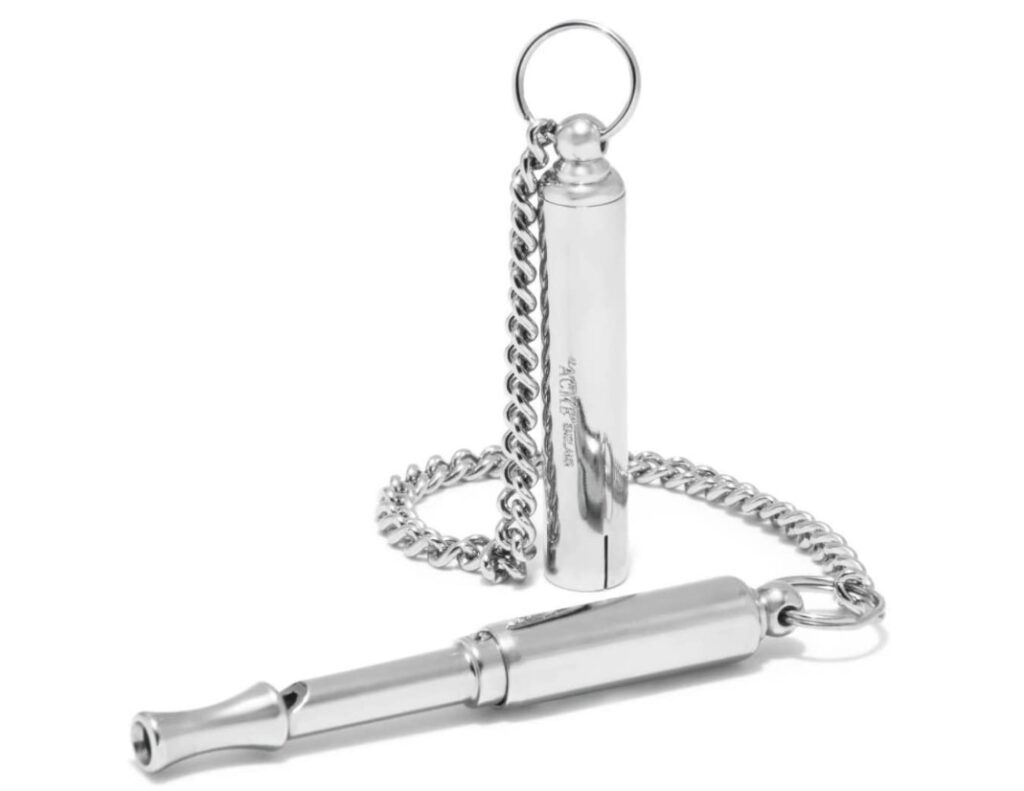As responsible dog owners, we understand that our furry friends cannot and will not always behave as we want them to. And that’s concerning, especially when you’re in public.
A situation where your dog attacks you or someone else may be rare, but you still need to prepare for them. This brings us to the question: Can a dog whistle stop a dog attack?
The effectiveness of dog whistles in stopping a dog attack is debated among experts and dog owners. While some claim that they’re reliable, it’s essential to understand their limitations.
Dog whistles are not a guaranteed solution to stop a dog attack. Their effectiveness largely depends on the individual dog and the specific circumstances of the situation. Factors such as the dog’s temperament, level of aggression, training, and the attack’s intensity will determine the outcome.
It’s important to note that dog whistles are not a substitute for proper training, socialisation, and responsible dog ownership. While they may offer an additional layer of protection, they should be used in conjunction with other preventive measures.
I know I’m being slightly contradictory. Let me explain.
How do dog whistles work?

Dog whistles, also known as silent whistles, emit ultrasonic frequencies that dogs can hear. The concept is based on the premise that dogs have more sensitive hearing than humans and can detect higher frequencies. These whistles typically produce sounds in the range of 23,000 to 54,000 Hz.
The ultrasonic sound produced by a dog whistle is intended to capture a dog’s attention or act as a deterrent. When blown, the high-pitched sound may help to redirect a dog’s focus or startle them, potentially interrupting aggressive behaviour.
1. Are dog whistles effective deterrents?
When used appropriately, a dog whistle may serve as a potential deterrent by effectively capturing a dog’s attention and diverting its focus. The high-pitched sound can startle or confuse a dog, momentarily interrupting its aggressive behaviour.
The noise a whistle makes isn’t unpleasant to an untrained ear and is most effective on dogs trained to respond to that noise.
Something along the lines of a foghorn is much more likely to startle an attacking dog enough to stop them in their tracks. Other techniques you can use are lifting the hind legs of the attacking dog and, of course, picking your dog up and turning away.
If you find yourself in a potential dog attack situation and choose to use a dog whistle as a self-defence measure, it’s important to consider a few factors:
Distance and Proximity: Dog whistles may have a limited effective range. To increase the chances of capturing the dog’s attention, it’s best to be close to the dog.
Timing and Response: Using it immediately is important to maximise its potential to distract or startle the dog. However, it’s important to remember that not all dogs will respond similarly, and the outcome may vary.
Confidence and Composure: Dogs can sense fear and anxiety, which may affect their response. Maintaining a confident and assertive posture can contribute to a more effective outcome.
Read More: How To Take An Aggressive Dog To The Vet
2. Can a dog whistle work through walls?
Dog whistles cannot work through walls; it’s a popular misconception that they can. The high-frequency sound produced by the whistle will get significantly attenuated or blocked by obstacles such as walls, doors, or windows. The effectiveness diminishes when there are physical barriers in between.
The whistle may still have some effect if the dog is near the barrier, but I wouldn’t bet my life on it. Therefore, using a dog whistle in an open or unobstructed space is best for optimal results.
What is the best whistle to stop dog attacks?

The 535 Acme ‘Silent Dog Whistle’ is a top-quality dog training whistle. Its adjustable frequency lets you fine-tune the whistle to suit your dog’s needs. The product performs reliably even in adverse weather conditions, such as rain, and remains unaffected by temperature differences, thus making it a practical choice for outdoor training sessions.
Choosing the right whistle for dog attack prevention is essential to maximise its effectiveness. Here are a few factors to keep in mind when choosing a whistle:
- Frequency Range
- Material and Durability
- Ease of Use
- Loudness and Projection
- Additional Features
When choosing a whistle, it’s essential to consider your specific needs and preferences. And if you’re still confused, you can check our guide on the Top Dog Whistles in the Market for Training, Barking & More.
Can a dog whistle stop barking?
We’ve established that they’re mildly effective at stopping an attack. So, how do they fare in stopping barking?
Dog whistles are primarily designed to capture a dog’s attention and redirect its focus. Hence, they’re somewhat effective at temporarily stopping a dog from barking while you resolve the situation.
Barking is a natural behaviour for dogs, and it serves various purposes, including communication, alerting, or expressing emotions. To address excessive barking, it’s crucial to understand the underlying causes and address them appropriately.
Working with a professional dog trainer or behaviourist can provide valuable guidance and techniques to help manage and modify barking behaviour effectively.
Do dog whistles hurt dogs?
Generally speaking, dog whistles don’t typically cause harm to dogs, provided you use them responsibly and within reasonable limits. The ultrasonic frequencies they produce are generally considered safe and do not pose a risk of hearing damage or physical harm to dogs.
Undoubtedly, the sound from the whistle will be loud to dogs. But the intensity decreases as it travels through the air. Additionally, most dog whistles are designed to emit a high-pitched sound that may be more attention-grabbing than painful.
To minimise any potential discomfort, it is advisable to start with lower frequencies or volume settings and gradually increase if necessary. Maintaining a safe distance from your dog’s ears is also crucial when using the whistle.
Read More: Here’s Why Your Dog Has Suddenly Turned Aggressive, And How To Fix It
Can dog whistles hurt human ears?
No, dog whistles are designed to produce sounds at frequencies generally inaudible to human ears. These high-frequency sounds are intended to capture dogs’ attention while being relatively harmless to human hearing. However, it’s worth noting that prolonged exposure to loud sounds, including those produced by dog whistles, can potentially damage human hearing. Therefore, it’s always advisable to use dog whistles responsibly and avoid prolonged or excessive exposure to the sound.

Other Tools and Techniques for Dog Attack Prevention
Regarding dog attack prevention, it’s essential to have a comprehensive approach beyond relying solely on a dog whistle. Knowing how to react and handle the situation is crucial in a dog attack or confrontation.
Here are some effective methods for managing a dog confrontation:
- Stay calm.
- Avoid eye contact.
- Stand still or move slowly.
- Use a firm and confident voice.
- Create a barrier.
- Back away slowly.
In addition to proper handling techniques, non-lethal self-defence tools and devices can provide an added layer of protection in case of a dog attack. You should consider arming yourself with pepper spray, ultrasonic deterrents, personal alarms, sticks or umbrellas.
Frequently Asked Questions (FAQs)
1. Can a dog whistle break up a dog fight?
A dog whistle alone is unlikely to effectively break up a dog fight. Dog fights can be intense and dangerous situations that require immediate and careful intervention. While the whistle may capture their attention, it may not stop the aggression or resolve the fight.
2. Do dog whistles affect / work on cats?
Dog whistles are primarily designed to capture dogs’ attention, as they are more sensitive to high-frequency sounds than humans. While some cats may be able to hear the sound produced by these whistles, they are generally less responsive to them than dogs.




